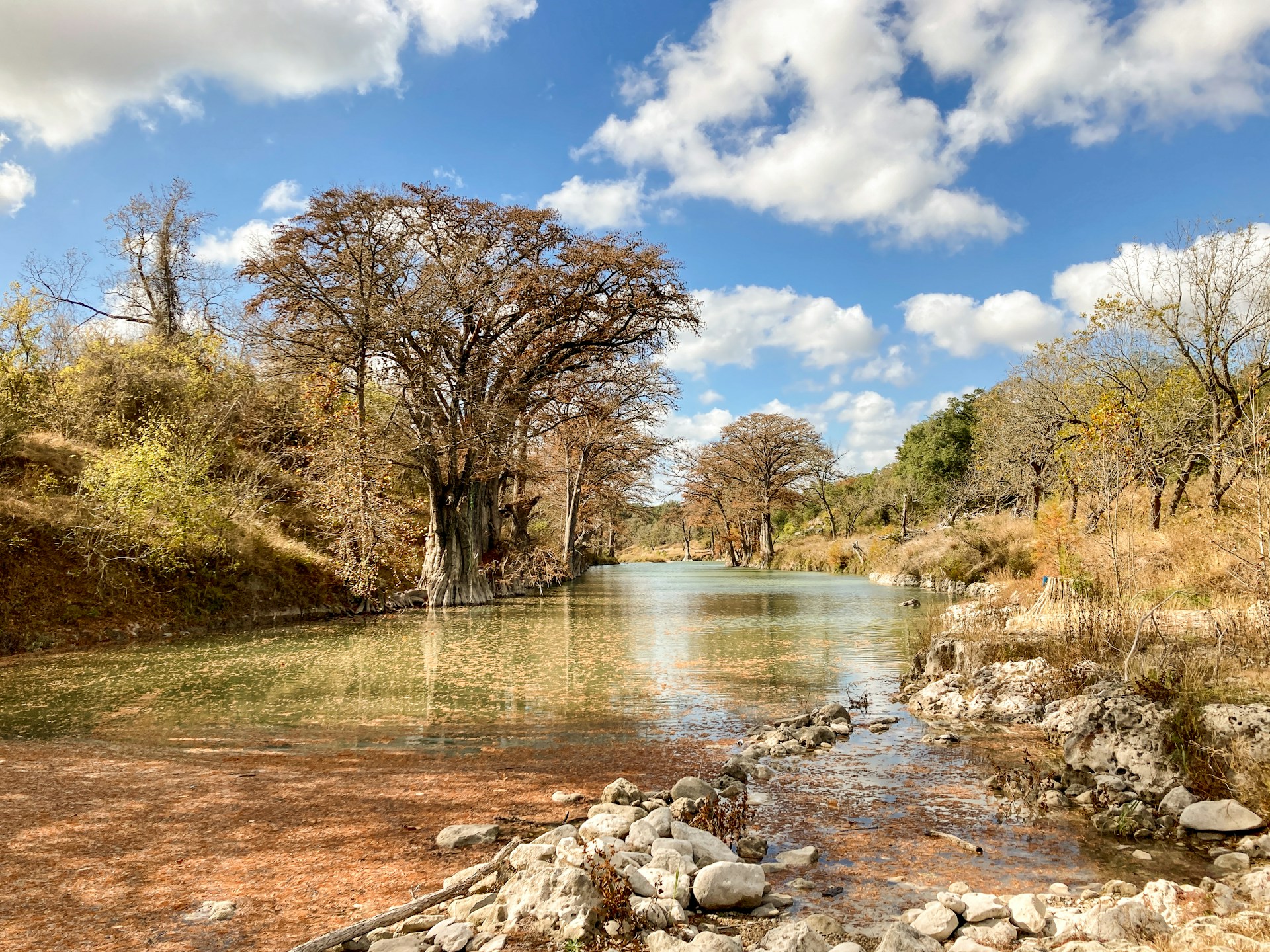The Biomass Crop Assistance Program (BCAP), a program added to the energy title of the 2008 farm bill, was intended to spur development of advanced biofuels derived from non-food and feed crops.
The goal was to pay individuals and companies to plant perennial grasses, harvest agricultural residues, collect wood waste, store these forms of biomass, and then transport the materials to bioenergy facilities (next-generation ethanol facilities or heat and power biomass plants). However, due to several implementation problems, program loopholes, past subsidies coming in greatly over budget, and technological and economic issues greatly limiting the amount of cellulosic biofuel production (derived from the aforementioned crops), BCAP funding has been repeatedly cut in annual spending bills and lawmakers have attempted to eliminate the program entirely.[[b][/b]i] The 2014 farm bill provided $25 million per year of mandatory funding for BCAP from Fiscal Years (FY) 2014-18, compared to unlimited funding allowed in the 2008 farm bill.[ii]
Background
BCAP is authorized though the energy title of the farm bill. The farm bill, renewed approximately every five years, is a wide ranging piece of legislation that funds everything from nutrition assistance programs and broadband internet to agricultural subsidies for the production of crops such as corn and soybeans. More specifically, the energy title of the farm bill, first introduced in 2002, provides grants, loans, and other subsidies to energy efficiency, biofuels, and bioenergy (heat and power) projects. In total, the 2014 farm bill energy title’s programs are projected to cost taxpayers $879 million from FY14-23.[iii]
The farm bill energy title supports a range of projects, from universities research on new uses of biomass sources, to established corn ethanol companies receiving grants for annual production of biofuel. Other energy title projects funded by taxpayers include:
- the collection, storage, harvest, and transportation of biomass sources to bioenergy or biofuels facilities (through BCAP)
- anaerobic digesters that create heat and power from animal waste
- grants and loans to individuals or companies installing wind, solar, and geothermal systems
- federally backed loan guarantees for “next generation” biofuels facilities that produce biofuels other than corn ethanol.
While intended to support the next generation of biofuels derived from non-food sources and other renewable forms of energy, the farm bill energy title has also spent taxpayer dollars on the mature corn ethanol industry, supporting biomass sources with numerous unintended consequences, and even paying for updates to farmers’ irrigation equipment and grain dryers.
Funding Challenges Due to Program Loopholes
After 2008, the U.S. Department of Agriculture’s Farm Service Agency initially implemented a portion of BCAP which paid up to $45 per ton for agricultural producers, forest owners, and landowners to collect, harvest, store, and or transport biomass materials (called CHST matching payments).[iv] It was not until recently that project areas were approved to pay farmers or landowners to plant perennial grasses and fast-growing trees to transport to facilities that convert crops to biofuel or heat/power.
BCAP was projected to cost $70 million over five years after passage of the 2008 farm bill, but since Congress initially allowed a blank check to be written each year from taxpayers, the program cost taxpayers $248 million just in FY2010.[v] Worse yet, BCAP failed to incentivize the types of projects its proponents fought for just two years earlier (planting of grasses and trees). According to USDA, “94 percent of the matching payments were for the delivery of woody biomass (as opposed to herbaceous biomass).”[vi] Hence, large pulp and paper companies collected nearly all of the 2009-2010 taxpayer subsidies by taking advantage of a loophole. As the Congressional Research Service noted, USDA “created a possible unintended consequence of market competition for wood shavings, wood chips, sawdust, and other wood ‘scraps’ between traditional purchasers—namely landscapers and particleboard manufactures—and facilities that convert biomass to energy.”[vii] Loggers and truckers also pocketed collection and transportation payments for business operations that would have been conducted anyway. While specific recipients are not released to the public, Table 1 includes the top states receiving CHST payments from FY09-10, all of which are heavily forested.[viii] In addition to woody biomass subsidies, $2,522,880 in matching payments were also made to Iowa corn farmers as of June 2012 to deliver corn stover presumably to three cellulosic ethanol facilities.
|
Table 1: Top 10 States Receiving BCAP’s CHST Payments, FY09-10 |
|||
|
State |
Total Subsidies |
Total Contracts |
Average Payment |
|
Maine |
$34,842,076 |
386 |
$90,264.45 |
|
California |
$29,563,832 |
264 |
$111,984.21 |
|
Alabama |
$24,554,814 |
568 |
$43,230.31 |
|
Georgia |
$21,798,277 |
348 |
$62,638.73 |
|
South Carolina |
$14,638,309 |
246 |
$59,505.32 |
|
Florida |
$12,595,046 |
122 |
$103,238.08 |
|
New Hampshire |
$11,822,402 |
130 |
$90,941.55 |
|
Michigan |
$10,354,004 |
257 |
$40,287.95 |
|
Texas |
$8,488,263 |
114 |
$74,458.45 |
|
New York |
$7,704,170 |
132 |
$58,364.92 |
With pressure from Congress and USDA’s own Office of Inspector General, the government halted the matching payment program in 2010, limited BCAP expenditures to $17 million in FY12, and prior to the 2014 farm bill, only paid farmers to actually plant crops for “next generation” biofuels or biomass facilities.[ix] The 2014 farm bill and post-2014 implementation of BCAP reauthorized CHST payments at $20 per ton for a maximum of two years with the aforementioned loopholes largely closed.[x]
Types of Feedstocks Receiving Taxpayer Funding
The types of crops eligible for BCAP crop establishment subsidies are summarized in Table 2 (below) by project area and companies developing the respective biomass technologies.[xi] In addition, annual rental and crop establishment subsidy obligations as of June 2012 are listed (this is the most recent information that USDA has made public).[xii] About two-thirds of the 11 approved project establishment areas will grow various perennial grasses, including miscanthus, a tall perennial grass used to produce cellulosic ethanol. The remaining four project areas will produce either camelina, an oilseed crop, for use in biodiesel production or woody biomass (such as hybrid poplar and shrub willow trees[xiii]) for use in heating, power, or cellulosic ethanol facilities. Note that Abengoa went into bankruptcy in the U.S. in 2016.[xiv]
|
Table 2: Approved Feedstocks for Biomass Crop Assistance Program Annual Payments[xv] |
|||
|
Types of Feedstocks |
Number of Projects |
Rental and Crop Establishment Subsidy Obligations – as of June 2012 |
States with USDA-Approved Project Areas with Respective Companies |
|
Perennial/native grasses and miscanthus fuel pellets |
7 |
$34,280,841 |
AR/MO (MFA Oil), KS/MO (Show-Me), NC (Chemtex), OH/PA (Aloterra), KS/OK (Abengoa) |
|
Camelina |
2 |
$1,215,498 |
CA/MTAltAir) and OR (Beaver Biomass) |
|
Woody biomass |
2 |
$18,820,218 |
NY (Reenergy) and OR (Zeachem) |
|
TOTAL |
11 |
$54,316,557 |
|
Notes: USDA explained in 2013 that not all payment information was available so this represents only a portion of BCAP costs.
Table 3, on the other hand, includes CHST subsidies (description of facilities, their locations, and feedstocks), which can be made to entities in any state. However, USDA announced eligible facilities in July 2014 which limits payments to certain areas, but most intend to collect, harvest, and transport woody biomass products such as wood waste, wood pellets, etc.[xvi] Only six of the 36 facilities eligible for taxpayer-subsidized biomass deliveries utilize other biomass sources such as agricultural residues (corn stover, nursery crop residue, potato residues, etc.), bioenergy crops, or other sources. As the project information demonstrates, most taxpayer subsidies are still being directed toward the mature wood products industry, not second generation biofuels derived from bioenergy crops such as switchgrass or agricultural residues. Despite restrictions placed on BCAP over the past five years, taxpayer subsidies are still failing to fulfill their intended goals.
|
Table 3: Facilities Eligible for Collection, Harvest, Storage, & Transportation Payments in the Biomass Crop Assistance Program, July 2014 |
||
|
Facility/Company Name |
State |
Type |
|
Novo BioPower LLC |
AZ |
wood products |
|
Forest Energy Corporation |
AZ |
wood products |
|
Burney Forest Power |
CA |
wood products |
|
Pacific Ultrapower-Chinese Station |
CA |
wood products, agricultural residues from nursery crops and trees |
|
HL(Honey Lake) Power Company |
CA |
wood products |
|
Rio Bravo Rocklin |
CA |
wood products |
|
Collins Pine Company |
CA |
wood products |
|
Thermal Energy Development Partnership, LP |
CA |
wood products |
|
Covanta Delano Inc. |
CA |
municipal waste |
|
Covanta Mendota L.P. |
CA |
municipal waste |
|
Sierra Pacific Industries – Sonora |
CA |
wood products |
|
Sierra Pacific Industries – Burney Division |
CA |
wood products |
|
Sierra Pacific Industries – Quincy Division |
CA |
wood products |
|
Sierra Pacific Industries – Lincoln |
CA |
wood products |
|
Roseburg Forest Products |
CA |
wood products |
|
Eagle Valley Clean Energy, LLC |
CO |
wood products |
|
Clearwater Paper Corporation |
ID |
wood products |
|
Basic American Foods |
ID |
agricultural residues from potatoes and beans |
|
Abengoa |
KS |
agricultural waste, bioenergy crops, perennial grasses, and wood products |
|
Hillman Power Company LLC |
MI |
wood products |
|
Minnesota Power – Hibbard Renewable Energy Center |
MN |
wood products |
|
Minnesota Power – Rapid Energy Center |
MN |
wood products |
|
Enginuity |
MO |
agricultural residues from corn stover, and bioenergy crops |
|
Eureka Pellet Mills Inc. |
MT |
wood products |
|
F.H. Stoltze Land & Lumber Co. |
MT |
wood products |
|
Chadron State College |
NE |
wood products |
|
Mt. Taylor Machine LLC |
NM |
wood products |
|
Biomass One LP |
OR |
wood products |
|
Interfor Pacific Inc., Gilchrist Division |
OR |
wood products |
|
Ochoco Lumber dba Malheur Lumber |
OR |
wood products |
|
Roseburg Forest Products |
OR |
wood products |
|
Seneca Sustainable Energy, LLC |
OR |
wood products |
|
Council Energy Inc. |
SC |
wood products |
|
Allendale Biomass LLC |
SC |
wood products |
|
Dorchester Biomass, LLC |
SC |
wood products |
|
Boise White Paper |
WA |
wood products |
The 2014 farm bill made clear that crop residue from crops that already receive farm commodity payments – but not the crop itself – are eligible for BCAP CHST subsidies; for example, corn stalks and cobs are eligible for BCAP payments but not corn starch for use in ethanol. In addition, woody biomass collected or harvested directly from the National Forest System, Bureau of Land Management land, non-Federal land, tribal lands (as long as a conservation plan is in place) or as a result of certain preventative treatments is also now eligible for taxpayer subsidies. Crops or other forms of biomass ineligible for payments include invasive and noxious plants, manure and animal byproducts, municipal solid waste, sugarcane bagasse, and algae.[xvii]
Conclusion
The Biomass Crop Assistance Program has faced several implementation challenges since its introduction in the 2008 farm bill. BCAP has failed to meet its stated goals of spurring production of next-generation bioenergy and biofuels crops and instead has come in significantly over budget while funneling taxpayer dollars to large pulp and paper companies for business activities that they would have engaged in anyway. Both Congress and USDA’s own Inspector General have highlighted shortcomings of the program. Questions from independent sources such as the National Research Council have also arisen about the feasibility of second-generation biofuel production, such as cellulosic ethanol produced from BCAP-subsidized feedstocks including perennial grasses and woody biomass. For these reasons, BCAP should be eliminated.
For more information, contact Taxpayers for Common Sense at 202-546-8500.
[i] http://sustainableagriculture.net/blog/house-ag-approps-fy16/
[ii] http://docs.house.gov/billsthisweek/20140127/CRPT-113hrpt-HR2642-SOM.pdf
[iii] http://cbo.gov/sites/default/files/cbofiles/attachments/hr2642LucasLtr.pdf
[iv] http://www.ers.usda.gov/FarmBill/2008/Titles/TitleIXEnergy.htm
[v] http://nationalaglawcenter.org/wp-content/uploads/assets/crs/R41296.pdf
[vi] http://www.fsa.usda.gov/Internet/FSA_File/bcap_documentation.pdf
[vii] https://www.fas.org/sgp/crs/misc/R41296.pdf
[viii] https://www.fsa.usda.gov/Internet/FSA_File/bcap_chst_summary_report.pdf
[ix] http://www.usda.gov/oig/webdocs/03601-0028-KC.pdf, http://sustainableagriculture.net/publications/grassrootsguide/renewable-energy/biomass-crop-assistance-program/
https://www.usda.gov/oig/webdocs/03601-28-KC.pdf
[x] http://docs.house.gov/billsthisweek/20140127/CRPT-113hrpt-HR2642-SOM.pdf
[xi] http://www.fsa.usda.gov/FSA/webapp?area=home&subject=ener&topic=bcap-pjt-bloc
[xii] http://www.fsa.usda.gov/Internet/FSA_File/bcap_documentation.pdf
[xiii] http://www.fsa.usda.gov/Internet/FSA_File/bcap_documentation.pdf
[xiv] http://www.wsj.com/articles/spains-abengoa-files-for-chapter-15-bankruptcy-in-u-s-1459256432
[xv] http://www.fsa.usda.gov/Internet/FSA_File/bcap_documentation.pdf
[xvi] https://www.fsa.usda.gov/news-room/news-releases/2014/nr_20140723_rel_0157
[xvii] https://www.fsa.usda.gov/Assets/USDA-FSA-Public/usdafiles/FactSheets/archived-fact-sheets/BCAP_Fact_Sheet.pdf













Get Social